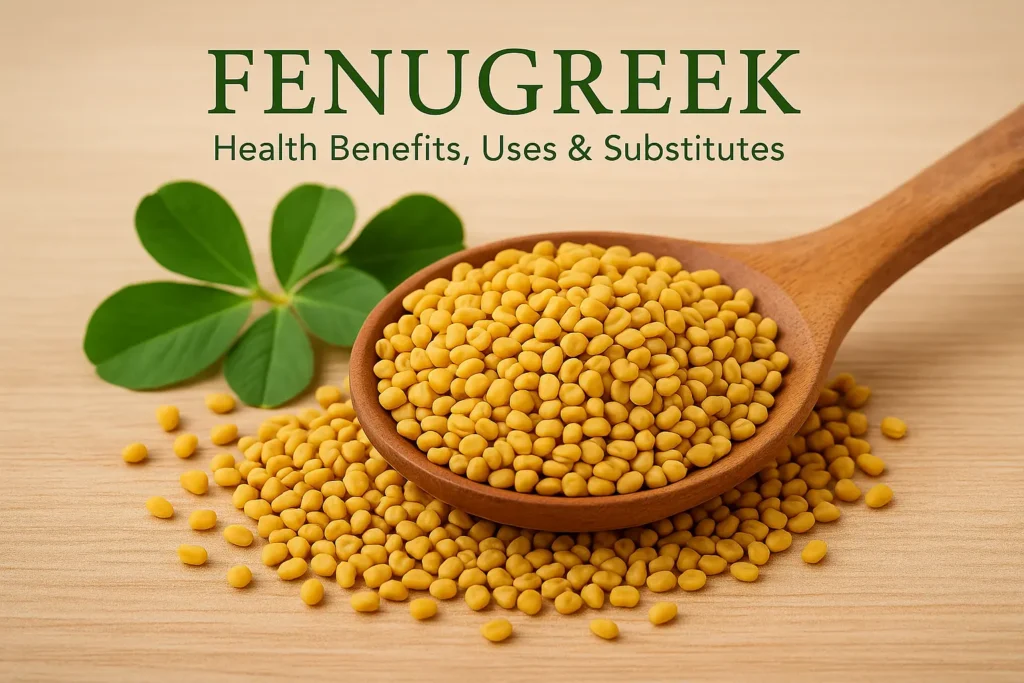foenegriek is a fragrant, nutty herb used for centuries across kitchens and traditional medicine. The seeds and leaves offer a warm, slightly bitter flavor that lifts curries, breads, and marinades. Beyond taste, many cultures have linked foenegriek to health benefits ranging from digestion support to energy balance. This article explains what makes this herb unique, how it is used, its possible benefits, and safety considerations.
What is foenegriek?
The plant behind the name is a legume valued both as a spice and a leafy vegetable. The small, golden seeds hold most of the aroma and nutrients, while the fresh leaves — widely known as methi in Indian cooking — add a slightly bitter, savory taste. foenegriek has roots in the Mediterranean, Middle East, and Asia, but today it is grown globally. In markets, it is sold as whole seeds, powder, capsules, or dried leaves for cooking.
Nutritional profile and key compounds
foenegriek seeds are rich in fiber, plant protein, and natural compounds such as galactomannans and saponins. These give the seeds their distinct aroma and contribute to digestive effects. In food, they bring depth and warmth, especially when roasted lightly before use. The fiber in foenegriek can promote a sense of fullness, while its antioxidants may support general wellness.
Benefits and traditional uses
For centuries, foenegriek has been used in folk remedies and cooking. Traditional uses include easing digestion, stimulating appetite, and supporting lactation in nursing mothers. Some studies also suggest potential effects on blood sugar and cholesterol, although results vary. While research continues, many people enjoy foenegriek as part of a balanced diet, valuing both its flavor and its possible wellness properties.
Cooking with foenegriek
Cooks often roast seeds before grinding to bring out their nutty aroma and reduce bitterness. Fresh leaves are added to flatbreads, curries, and sautés, while dried leaves (kasoori methi) are crumbled into sauces for a deep, savory flavor. foenegriek tea, made by steeping seeds in hot water, is another common preparation. Cheese varieties with foenegriek seeds are also popular for their unique taste.
Supplements and modern products
Beyond the kitchen, foenegriek is available in capsules, powders, teas, and oils. These supplements are marketed for energy, digestion, and hormonal balance. If you choose to try a product, select a reliable brand and follow the suggested serving. Since foenegriek may interact with certain medications, especially for diabetes or blood thinning, consulting a professional before use is recommended.
Safety, side effects, and precautions
In culinary amounts, foenegriek is generally safe. Higher doses, especially from concentrated supplements, may cause digestive discomfort or a noticeable maple-like scent on the skin. People with peanut or legume allergies should be careful, as cross-reactions may occur. Pregnant individuals are advised to avoid high supplemental doses due to potential uterine stimulation. Always introduce foenegriek gradually and observe how your body responds.
Growing and storing foenegriek
This herb grows well in sunny spots with well-drained soil. Seeds sprout quickly, making it an easy plant for home gardeners. Leaves can be harvested young for cooking, while mature plants produce pods that dry into the familiar seeds. To store, keep seeds in an airtight container away from light. Whole seeds maintain their flavor longer than ground powder and are best toasted and crushed just before use.
Conclusion
foenegriek is a versatile herb, blending rich flavor with traditional wellness uses. It can be a simple kitchen spice or a supplement, depending on your preference. While research into its health effects is still developing, it remains a safe and useful ingredient when consumed in moderation. Whether in breads, teas, or curries, foenegriek adds depth to cooking and curiosity to natural health discussions.
Frequently Asked Questions
Q: Can foenegriek be eaten daily?
Yes, small amounts in food are safe for most people. Larger doses should be taken with guidance.
Q: Does foenegriek lower blood sugar?
It may influence blood sugar, so people on diabetes medication should consult a doctor.
Q: How do you prepare foenegriek seeds?
Toast them lightly to reduce bitterness and grind before adding to recipes.
Q: Is foenegriek safe during pregnancy?
High doses are not advised in pregnancy. Culinary amounts are usually considered safe.
Q: How long do foenegriek seeds last?
Stored in an airtight container, whole seeds keep flavor for many months.

